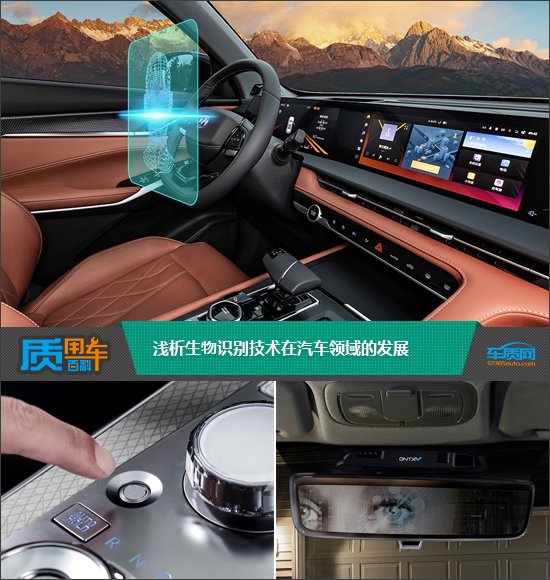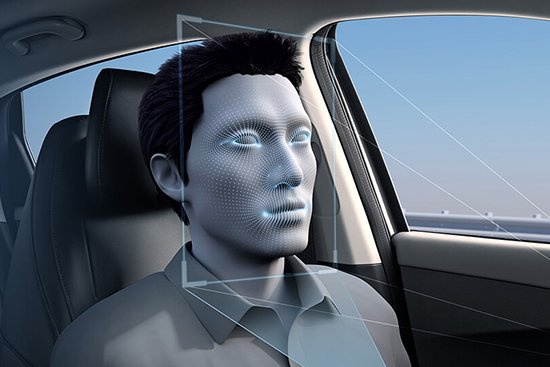Now, people are accustomed to unlocking their phones with fingerprints and making payments by facial recognition. Biometric technology has brought more convenience to daily life. Besides affecting daily life, biometric technology has also been widely used in the automotive field and has shown an accelerating trend in recent years. According to relevant reports, by 2025, one-third of new cars globally will be equipped with biometric sensors. How does biometric technology impact the automotive industry? What changes will it bring to the automotive industry? This issue of “Quality and Use of Cars” will provide a specific analysis. 1. What is biometric technology? What are the characteristics of biometric technology?
The so-called biometric recognition technology is the use of high-tech means such as computers, optics, acoustics, biometric sensors, and biostatistics principles to combine closely with the inherent physiological characteristics and behavioral characteristics of the human body for personal identity verification. Compared with traditional identity verification, biometric recognition technology has the following characteristics: 1. Portability: Biometric features are unique to the human body and are portable. 2. Security: Human characteristics themselves are the best proof of personal identity, meeting higher security needs. 3. Uniqueness: Each person has unique biometric features. 4. Stability: Biometric features such as fingerprints and irises do not change with time. 5. Universality: Everyone has biometric features. 6. Convenience: Biometric recognition technology does not require remembering passwords or carrying special tools, and cannot be lost. 7. Collectability: Biometric features are easy to measure. 8. Acceptability: Users are willing to accept the selected personal biometric features and their applications. Based on the above characteristics, biometric recognition technology has advantages that traditional identity verification methods cannot match. By using biometric recognition technology, there is no need to remember or set passwords, and it can be used to securely encrypt important documents, data, and transactions, effectively preventing malicious use and making it more convenient. Biometric recognition technology has been widely used in the automotive industry.
Biometric technology is widely used in daily life and is quickly integrating into the automotive industry. Biometric technology in the automotive industry includes fingerprint recognition, voice recognition, gesture recognition, facial recognition, iris recognition. 1. Fingerprint recognition Fingerprint recognition technology compares the details of human fingerprints with known database points to identify individual identities. This technology has been applied in the automotive field since 2004, with Audi A8L being equipped with a fingerprint start button. Fingerprints are small, low-cost, and suitable for mass adoption, but can be affected by external factors like damaged skin, temperature, and humidity, and can be easily copied. 2. Voice recognition Voice recognition is the most widely used biometric technology in cars, mainly for intelligent voice control to operate the vehicle. It is simple and convenient but can be easily disturbed by external noise and requires standard Mandarin for current voice control systems. 3. Gesture recognition Similar to voice recognition, gesture recognition is a “non-contact” control method where sensors detect hand movements near the touch screen or console to perform functions like making calls, adjusting volume, selecting songs, and controlling the vehicle. Gesture recognition includes static and dynamic recognition. 1. UNI-K models from Changan Motors feature static gesture recognition, while BMW 7 Series, 5 Series, X7, X5, and other models use dynamic gesture recognition. 2. Gesture recognition is simple to operate and unaffected by external factors. However, it currently only controls specific functions in cars, lacks expandability, and requires users to align with sensors for accurate recognition. 3. Face recognition technology quantifies a series of parameters based on facial features and distances, angles, sizes, and shapes of facial organs for identification. 4. Face recognition is widely used in monitoring driver attention and identity verification in smart driving systems like Cadillac Super Cruise and Subaru DriverFocus, as well as models with FACE ID recognition like Avita 11 and Leapmotor C01. 5. Iris recognition technology identifies individuals based on the unique features of their irises, known for its high accuracy, stability, and upgradability. It was first applied in the BMW iNext model in 2021, and Hyundai applied for a patent for an iris authentication system in 2022 in the US. Compared to fingerprint and face recognition, contactless iris recognition offers higher security due to its unique structure that is difficult to replicate. The iris recognition system consists of software and hardware modules. High costs, software difficulties, and unstable cameras limit the widespread adoption of this technology.


